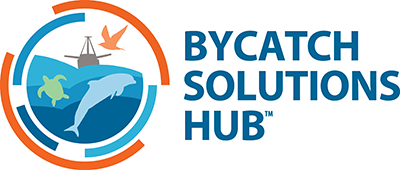Key Takeaways
- Bycatch in the US Gulf of Mexico shrimp fishery was a major source of sea turtle mortality in the 1980s and 90s negatively impacting sea turtle populations
- Creation and implementation of TEDs in the shrimp fishery provided a solution to minimize risk to sea turtles while not impacting catch rates.
- Eventual collaboration between fishers and NOAA through FIPs led to substantial increases in proper installation of TEDs across the different shrimp trawl fisheries.
- Currently 99% of all US Gulf of Mexico shrimp harvest from trawl fisheries are organized within a TIP.
- This accounts for up to 97% reduction in risk to sea turtles from these fisheries.
Five species of endangered sea turtles overlap with the Gulf of Mexico shrimp trawl fishery. As the fishery became industrialized in the second half of the 20th century, sea turtle bycatch increased substantially as nets and tows become larger and longer, respectively. This led to high rates of sea turtle mortality since sea turtles rarely survived the being trapped underwater for long periods of time and often were injured from either interactions with the net or the pressure from catch piling up.
When turtle excluder devices (TEDs) were created they provided a solution to address the high rates of sea turtle bycatch in the fishery. TEDs are simple panels made of bars that prevent sea turtles (and other large animals like sturgeon) from getting pulled into the codend of the net and directs them towards an access hole that allows them to escape. At the same time, the gap between the bars allows shrimp and other small fish to pass through the panel and into the codend of the trawl net.
If installed properly, TEDs greatly reduce the risk of bycatch in trawl fisheries to sea turtles. They have been proven to result in a 97% release rate for sea turtles that get overtaken by a trawl net with the majority of the sea turtles that don’t escape small juveniles that either pass through the TED or aren’t strong enough to fight the current.
Over the last ten years, US Gulf of Mexico shrimp fisheries have taken the responsibility to make sure that TEDs are properly installed through proactive gear inspections as part of five different Fishery Improvement Projects (FIPs). These FIPs cover 99% of the US Gulf of Mexico shrimp harvest, ensuring that these fisheries are working to reduce bycatch risks to sea turtles to the lowest level possible.

